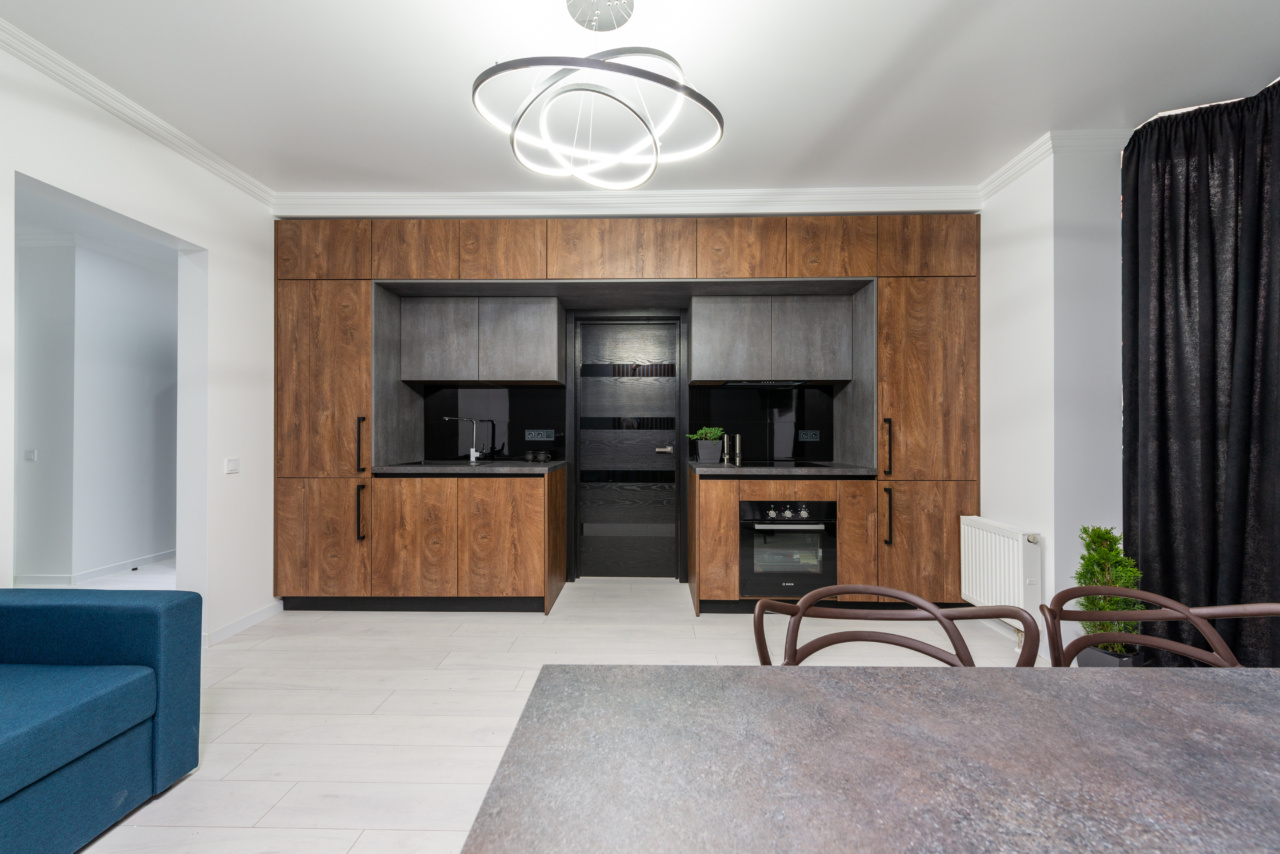Heating is an essential aspect of our daily lives, especially during the winter months. It provides warmth and comfort, making our homes enjoyable to live in. However, many people do not fully understand the ins and outs of heating systems.
This article will help you understand everything you need to know about heating systems, from A to Z.
A – Air Source Heat Pumps (ASHPs)
ASHPs are heating systems that use the outdoor air as a heat source to heat your home.
These systems work by taking in outside air which is then compressed by a heat pump, increasing the temperature and distributing warm air via radiators, underfloor heating or warm air units. ASHPs are highly energy-efficient and can reduce your carbon footprint. Installation costs can be high, but they can save you money in the long term.
B – Boilers
Boilers are the most common type of heating system in homes. They work by burning fuel (gas, oil or LPG) to heat water, which is then circulated around your home through a network of radiators or underfloor pipes.
There are different types of boilers available, including combi boilers, system boilers and conventional boilers. The type of boiler that is best for your home will depend on your needs and budget.
C – Central Heating
Central heating is a system that controls the temperature of your entire home from a single central control unit.
This system uses a boiler to heat water, which is then circulated around your home through a network of pipes and radiators or underfloor heating. It is an efficient way to heat your home and can be controlled by a thermostat or smart home system.
D – Ducted Heating Systems
Ducted heating systems are a popular heating option in Australia. These systems work by distributing warm air throughout your home via ducts in the ceiling or floor.
The air is heated by a gas furnace or electric heat pump and is then circulated throughout your home via ducts. Ducted heating systems are highly efficient and can be zoned to control temperature in different areas of the home.
E – Electric Underfloor Heating
Electric underfloor heating is a type of heating system that uses electrical cables or mats to heat your home from beneath the floor. These systems are installed beneath your flooring and are controlled by a thermostat.
Electric underfloor heating systems are highly efficient, provide even heat distribution and can be used under a variety of floor types including tiles, carpet and timber.
F – Fuel Options
The fuel options available for heating systems are gas, oil, LPG and electricity. Each fuel source has its own benefits and drawbacks. Gas is the most popular fuel choice in the UK because it is cheap and efficient.
Oil and LPG are the most popular fuel choices in rural areas where gas mains are not available. Electricity is the most expensive fuel option, but electric heating systems can be highly energy-efficient.
G – Geothermal Heat Pumps
Geothermal heat pumps are heating systems that use the heat from the earth to heat your home. These systems work by drawing heat from the ground via a series of pipes that are buried underground.
The heat is then compressed by a heat pump, increasing the temperature, and distributed through your home via a network of radiators, underfloor heating or warm air units. Geothermal heat pumps are highly efficient and have a low carbon footprint, but installation costs can be high.
H – Hydronic Heating
Hydronic heating is a type of heating system that uses hot water to heat your home. These systems work by circulating hot water through a network of pipes placed under the flooring or through radiators.
Hydronic heating systems can be highly efficient, provide even heat distribution and are popular in Europe and Australia.
I – Insulation
Insulation is an essential aspect of any heating system. Proper insulation helps your home retain heat, which can significantly reduce your energy bills. Insulation can be installed in your roof, walls, floors and windows.
It is important to ensure that your home is adequately insulated to prevent heat loss.
J – Joules and Watts
Joules and watts are units of measurement used to measure heat and energy. Joules are used to measure heat energy, and watts are used to measure power output.
It is important to understand these units of measurement as they can help you determine the most efficient heating system for your home.
K – Kerosene Heaters
Kerosene heaters are portable heating systems that use kerosene to generate heat. These heaters are popular in areas where electricity is not available, such as camping trips or power outages.
Kerosene heaters are not suitable for indoor use and can be hazardous if not used correctly.
L – Low-Carbon Heating Systems
Low-carbon heating systems are heating systems that have a low carbon footprint, reduce your energy bills and help protect the environment. Examples of low-carbon heating systems include ASHPs, geothermal heat pumps and solar thermal systems.
These systems can be expensive to install, but they can save you money in the long term.
M – Maintenance
Maintenance is essential for any heating system to ensure it is running efficiently and reliably. Regular maintenance can also prevent breakdowns and reduce your energy bills.
It is recommended to have your heating system serviced annually by a qualified heating engineer.
N – Night Storage Heaters
Night storage heaters are electric heating systems that use low-cost off-peak electricity to store heat during the night and release it during the day. These systems are popular in areas where gas is not available.
Night storage heaters can be highly efficient, but they do require space for the storage units, and heat output can be difficult to control.
O – Oil Tanks
Oil tanks are used to store oil for heating systems that run on oil. Oil tanks come in different sizes and can be positioned above or below the ground.
It is important to check your oil tank regularly for leaks and to ensure that you have enough oil for your heating needs.
P – Power Flushing
Power flushing is a process used to clean the pipes and radiators in a central heating system. Over time, the pipes and radiators in your heating system can become clogged with sludge and debris, reducing the efficiency of your heating system.
Power flushing uses a specialist machine to pump water and cleaning chemicals through the system, removing the sludge and debris and improving efficiency.
Q – Quick Fix
Heating systems can sometimes break down unexpectedly, leaving you without heat. In these situations, it is important to have a quick fix on hand, such as an electric heater or portable gas heater.
These heaters are not a replacement for a fully functioning heating system, but they can provide temporary heat until the problem is resolved.
R – Radiators
Radiators are a common way to distribute heat in a central heating system. They work by heating water, which is then circulated through the pipes and radiators in your home.
Radiators come in different sizes and styles, including traditional column radiators, flat panel radiators and towel rails. The size and type of radiator you need will depend on the size of your room and personal preference.
S – Solar Thermal Systems
Solar thermal systems are heating systems that use energy from the sun to heat water. These systems work by installing solar panels on your roof or in your garden, which collect energy from the sun.
The energy is then used to heat water, which is circulated through your home via a network of pipes and radiators. Solar thermal systems are highly efficient and have a low carbon footprint, but installation costs can be high.
T – Thermostats
Thermostats are devices used to control the temperature of your heating system. They work by sensing the temperature of a room or area and adjusting the heating system accordingly.
There are different types of thermostats available, including manual thermostats, programmable thermostats and smart thermostats. Smart thermostats can be controlled remotely via a smartphone app, allowing you to adjust the temperature of your heating system from anywhere.
U – Underfloor Heating
Underfloor heating is a type of heating system that heats your home from beneath the floor. There are two main types of underfloor heating systems: electric and hydronic.
Electric underfloor heating uses electrical cables or mats to heat your home, while hydronic underfloor heating uses hot water. Underfloor heating systems are highly efficient, provide even heat distribution and can be installed beneath a variety of flooring materials.
V – Ventilation
Ventilation is an important aspect of any heating system. Proper ventilation helps maintain air quality and prevent the buildup of harmful gases, such as carbon monoxide.
It is important to ensure that your home has adequate ventilation and to have your heating system checked regularly for any potential problems.
W – Warm Air Units
Warm air units are heating systems that circulate warm air throughout your home via a network of ducts. These systems work by heating air using a gas furnace or electric heat pump, which is then circulated via ducts, similar to a ducted heating system.
Warm air units can be highly efficient and are popular in commercial buildings and larger homes.
X – Xcel Energy
Xcel Energy is a utility company that provides natural gas and electricity to customers in eight states. If you are considering a heating system that uses natural gas or electricity, Xcel Energy may be your provider.
Their website offers information regarding energy-efficient heating systems, tips for reducing your energy bills and rebates for upgrading to energy-efficient systems.
Y – Yearly Tune-Up
A yearly tune-up can help keep your heating system running efficiently and prevent breakdowns. During a yearly tune-up, a qualified heating engineer will inspect your system, clean your filters and check for any potential problems.
Regular maintenance can also help increase the lifespan of your heating system.
Z – Zone Control
Zone control is a way to control the temperature of different areas or zones in your home. This can be achieved through the use of thermostats, dampers in your ductwork, or individual heating units in each room.
Zone control can help reduce your energy bills and provide greater comfort throughout your home.































